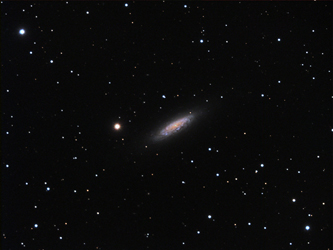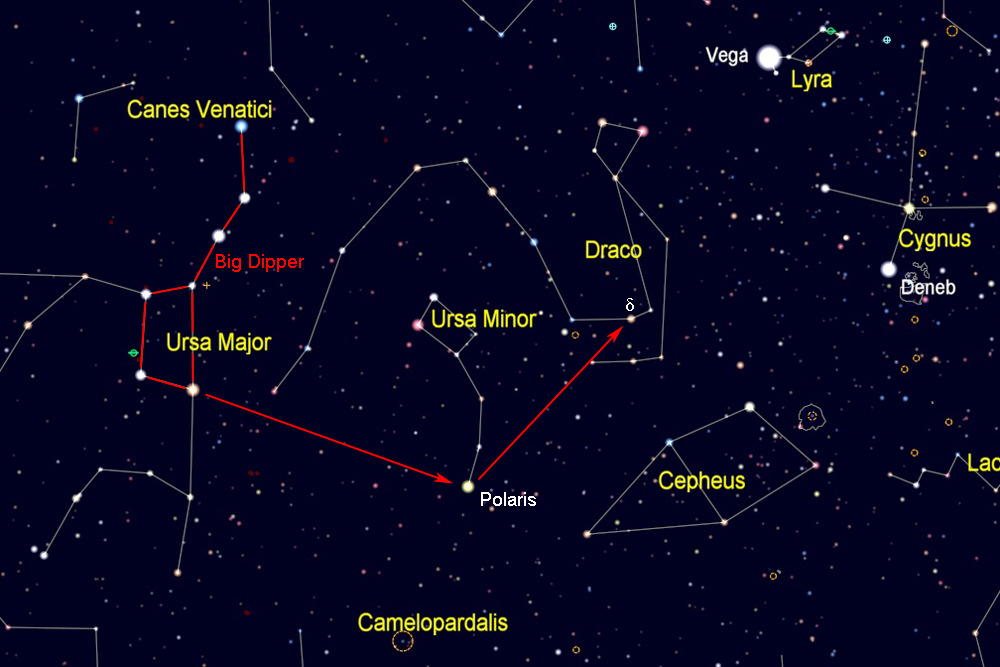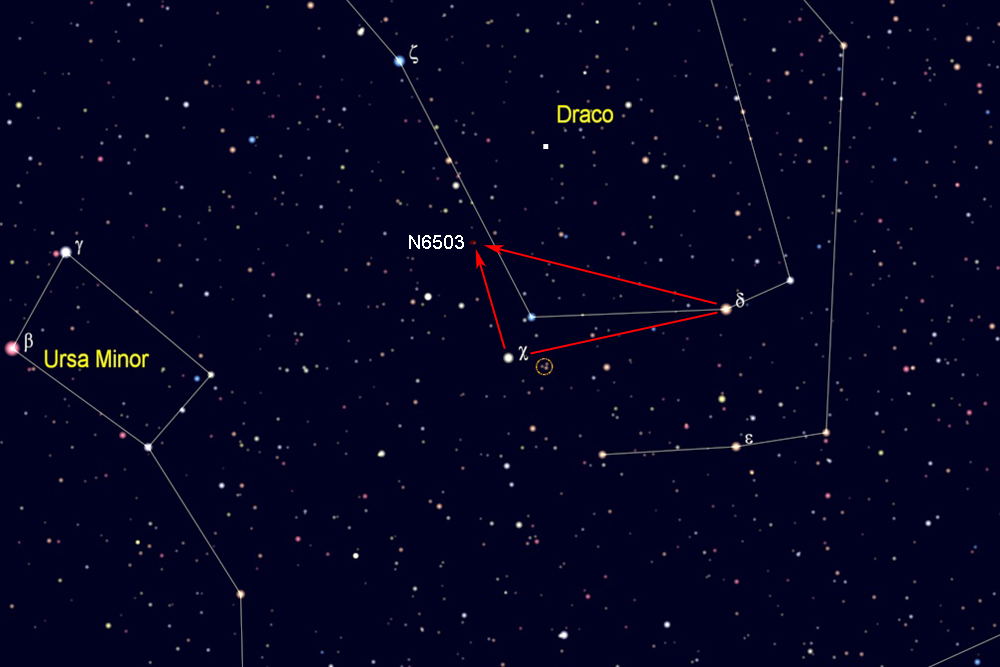
Start by finding the Big Dipper, one of the most recognizable star patterns in the sky. It is part of the constellation Ursa Major, the big bear. It is shown here roughly as it is orinented in the evenings of late summer and fall. Use the two pointer stars in the bowl of the Big Dipper to find Polaris, the North Star. Then take a left turn to reach a group of stars that form a twist in the body of Draco, the dragon. The brightest star in this group is δ (delta) Draconis.

This is a tricky area of the sky to navigate, so look carefully at the chart below. Locate δ Draconis and χ Draconis, two 3rd magnitude stars about 6 degrees apart. Imagine an right triangle with these two stars as the longer side, as shown in the chart, and the third point of this triangle shows the location of NGC 6503. Through a telescope, an 8th magnitude star 4 arcminutes to the east of the galaxy can help to locate it.
